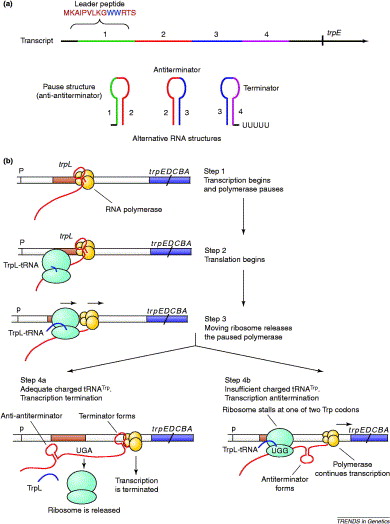How does trp operon regulate tryptophan levels?
1 Answer
The trp operon specifically, is repressible.
Explanation:
First, we must understand that there are a lot of operons out there in molecular biology that can do a variety of things.
All operons are either under positive or negative control. Positively controlled operons are ones where gene expression is only stimulated by the presence of a regulatory protein. Negatively controlled operons are ones where gene expression is turned off in the presence of a repressor - this is either repressible or inducible.
The trp operon you are talking about is a repressible system. It has multiple domains (structures that are specifically activated under certain conditions on a molecular scale).
So yes, the trp operon regulates the production of tryptophan. Let's give two situations where it is most obvious.

When levels of tryptophan are very high in the cell, levels of tryptophan RNA are also obviously very high. Therefore, immediately after translation, the mRNA will move quickly through the ribosome complex on domain 1 and the short peptide structure in tryptophan is translated very quickly.As an effect of quick translation, domain 2 in the trp operon becomes chemically associated with the ribosome complex, effectively blocking it, while domain 3 binds to domain 4, stopping translation as a loop feedback occurs. This is known as an attenuation of transcription, and only about 10% of regular mRNA is created.
On the other hand, when cellular levels of tryptophan are low, translation of the short peptide is translated slowly in domain 1. As the mRNA moves slowly, the domain 2 binds to domain 3 and because the ribosome doesn't bind to domain 2, transcription occurs normally and biosynthesis of tryptophan occurs normally.


